#inorganic
Explore tagged Tumblr posts
Text







works by Giordano Rizzardi
Over the millennia, the myth of this creature spread among Earth's cultures. It was said that anyone who could decipher the mystery of his transformation would gain profound insight into the universe.
Nel corso dei millenni, il mito di questa creatura si diffuse tra le culture della Terra. Si diceva che chiunque riuscisse a decifrare il mistero della sua trasformazione avrebbe ottenuto un'intuizione profonda sull'universo.
#giordano rizzardi#zoologia fantastica#artecontemporanea#surrealist art#surreal#animals#Cansiglio#noir#black forest#ossea#biology#compatible#inorganic#Zona del Silencio
630 notes
·
View notes
Text

An actual sign at my supermarket? What is organic water supposed to mean?????????
#water#dihydrogen monoxide#chemistry#grocery store#groceries#grocery shopping#grocery prices#organic#inorganic#i thought water was sn inorganic compound#like wtf#wtf is this#wtf is going on#wtf#i lost brain cells looking at this
3 notes
·
View notes
Text
The global phosphorus cycle is described in Fig. 14.11.

"Environmental Chemistry: A Global Perspective", 4e - Gary W. VanLoon & Stephen J. Duffy
#book quotes#environmental chemistry#nonfiction#textbook#phosphorus#cycle#atmosphere#aerosol#precipitation#hydrosphere#sea water#sea salt#salt spray#fresh water#decomposition#erosion#leaching#sedimentation#guano#dust#lithosphere#detritus#organic matter#inorganic#sediment#biosphere#plants#apatite
2 notes
·
View notes
Photo

(via Inorganic Reactions - All Important Inorganic Reactions)
3 notes
·
View notes
Photo

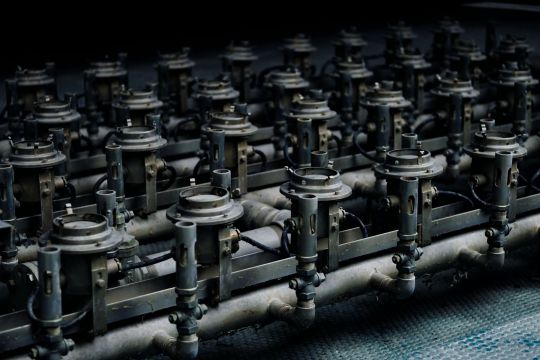
41 notes
·
View notes
Text
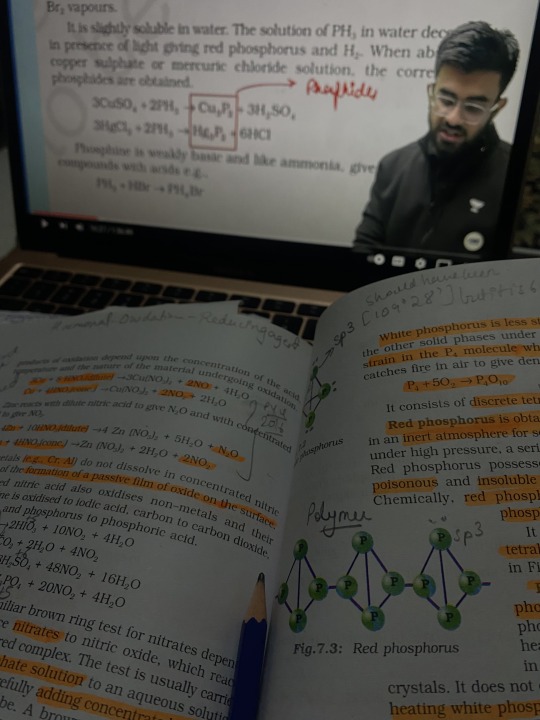
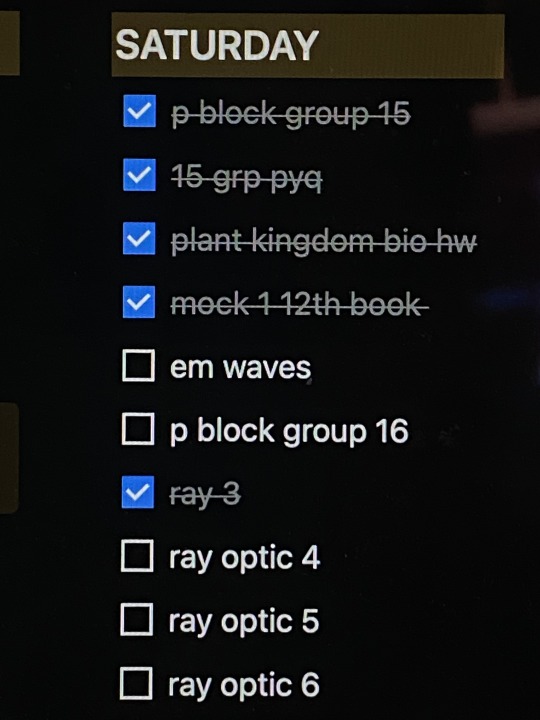
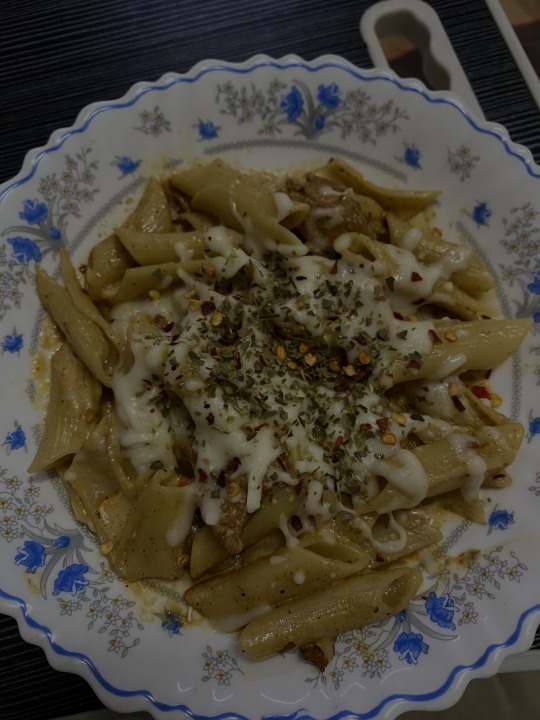

I wasn’t posting regularly because i haven’t been much productive and i seriously need to be, im not able to wake up early and study i end up closing alarms and sleeping :/ which is not good for me.
i feel so disappointed in myself and the conditions in my home and the fights just disturb me sm mentally lol. i have sm syllabus left and i need to finish it as well as study for the next upcoming mock. there was an event at my home today so all my evening got spent in attending the relatives.
i feel better tho, after talking to one of my childhood friends :)
Goodnight.
#im losing it#study aesthetic#inorganic#chemistry#pasta#pastalovers#cheese#grungy aesthetic#grunge#heartbreak#heartache
19 notes
·
View notes
Text
When you tune the nmr after switching nuclei and it's quiet and you can hear your beloved magnetic pet squeakily contorting itself just to get your data and feel a little bad but also excited to see what you made.
#chemistry#chemblr#stemblr#women in stem#spectroscopy#grad school#I'm so sorry-you're so old-please don't break#inorganic chemistry#inorganic
5 notes
·
View notes
Text

#geometrical#isomerism#chemistry#solutions#platinum#ethylene diamine#chloride#ammonia#inorganic#complex
2 notes
·
View notes
Text
Credit: 2023/07/2 Twitter
#freen#freen sarocha#sarocha 'freen' chankimha#sarocha chankimha#ฟรีน สโรชา จันทร์กิมฮะ#สโรชา จันทร์กิมฮะ#2023#freenbecky#ฟรีน#ฟรีนเบค#Hong Kong#inorganic#srchafreen#event
4 notes
·
View notes
Text
もし生まれ変われるのなら、来世は限りなく無機物に近い生命として過ごしたい。 そう思った次の瞬間、あらぬ愚問が脳裏をよぎる。 …ウィルスに、果たして魂は宿るのだろうか?
If I could be reborn, I would like to spend my next life as lifeform close to inorganic as possible. The next moment I thought of this, I had a foolish question in my brain. … Can a soul with in a virus ?
#pessimistic poor writing#厭世主義的駄文#reborn#next life#lifeform#inorganic#foolish question#brain#soul#virus
1 note
·
View note
Text
By Sheng Lam


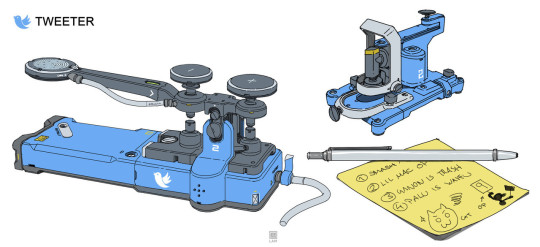




28K notes
·
View notes
Text




Dumb thing that would not leave my brain
#jayvik#arcane#viktor#jayce talis#suggestive#bluesky enjoyed this one way more than i thought so i figured id toss it here too#ive gotten such sweet nice comments on my last triptych drawings#fellow jayviks you are so niceys#stop enabling me!!!! ill want to draw more!!!!#i STILL cant get jayce's face right. i feel like flynn rider#i hate hate hate drawing anything inorganic especially in perspective#if i have to draw a straight line or an ellipse its game over#so it truly speaks to my love for The Character that ive willingly drawn viktor's brace several times lol
35K notes
·
View notes
Text
Chemistry Sem 4 End - Mod 1
Lanthanide contraction
aka trends in atomic and ionic radii
There is a regular decrease in the atomic and ionic radii with each increase in atomic number as we go from La to Lu.
This decrease in size is called Lanthanide contraction.
The configuration of Lanthanides show that the added electrons enters 4f-orbitals.
The shielding effect of 4F orbital is said to be imperfect due to its diffused shape.
Thus as the anomic no. increases, the nuclear charge increase by unity at every step, while there is no comparable increase in shielding effect of 4f e-.
This causes a contraction in the size of 4f orbitals consequently. The atomic+ionic radii goes on decreasing as we go from La to Lu.
Consequences of lanthanide contraction include: - Steady decrease in size from La to Lu. - Gradual increase in electronegativity, hence the reactivity increases. - Steady increase in standard reduction potentials.
Major consequences:
1) Occurrence of Yttrium (a transition element) with heavier lanthanides: - Since the size of Y3+ ion is comparable to the heavier ions like Tb3+, Dy3+, Ho3+, and Er3+, it occurs with them in natural minerals. - The crystal structure, solubility and chemical properties of the yttrium compounds are so close, these heavier lanthanides are known as yttrium earths
2) Close resemblance of properties of II and III transition series: - Zr and Hf, Mo and W, Ru and Os, all have the same size. - Transition elements of the third series have virtually the same atomic and ionic sizes as the corresponding elements just above them in their respective sub-groups. - Hf and Zr were expected to have different sizes but because of lanthanide contraction, Hf has contracted so much that it is the same size as that of Zr. They resemble very closely in their physical and chemical properties. - Therefore they occur together in the earth's crust and their separation is difficult, same for Mo and W and Ru and Os.
3) Basicity of oxides and hydroxides: - Basicity is defined as tendency to lose electrons. The greater the size, the greater the basicity. - From La to Lu, as size decreases, basicity of oxides and hydroxides decreases. Hence La(OH)3 is more basic and Lu(OH)3 is less basic.
4) Tendency to form complexes: - From La to Lu as size decreases, ionic character decreases and covalent character increases. Greater the covalent character, greater the tendency to form complexes. - Complex formation tendency of Lanthanides is comparatively less than the d-block elements because of their low charge density, i.e., change to size ratio. - The tendency to form complexes and the stabilities of complexes increases with increase in size in case of lanthanides. More stable complexes are formed in higher O.S. than in lower O.S.
--- II and III transition series compared with their 3d analogues

--- Transition elements, complex formation, catalytic susceptibility
Transition Elements

d-d Transition (ik it's not asked)


Complex Formation
All transition metal ions have vacant d-orbitals in which they accept electron pairs donated by the ligands.
They act as electron pair acceptors or Lewis acids.
The species which donates the pair of electron is called as ligands.
Ligands are electron pair donors or Lewis bases.
The most important property of transition elements is to form complexes or coordination compounds because - All transition elements are smaller in size, they have very high effective nuclear charge. - Greater the effective nuclear charge, the greater is the tendency to form complexes. - They have incompletely filled or vacant d-orbitals to accept electrons donated by the ligands.
The tendency to form complexes and the stability of complexes across the transition series increases with increase in atomic number or decreases in size of the ion.
With a particular metal ion and particular ligand, stable complexes are formed in higher oxidation states than lower O.S.
-
Catalytic Properties
A catalyst is a substance which increases the speed of the reaction without itself undergoing any change.
Ex of transition metal catalysts used in industrial processes:
i) TiCl4 (Titanium tetrachloride) - it is used as a Ziegler-Natta catalyst in polymerization of ethene or ethylene to produce polyethene.
ii) V2O5 (Vanadium pentoxide) - Used in oxidation of SO2 to SO3 in the manufacture of H2SO4 in contact process.
iii) MnO2 (Manganese dioxide) - Used in decomposition of KClO3 to give KCl and O2.
iv) Fe-Mo (Ferro Molybdenum) - Iron along with promoter molybdenum is used in production of NH3 by Haeber's process.
v) Pd - Used in hydrogenation of phenols.
vi) Pt - Used in Ostwald's process for manufacture of HNO3.
--- Gouy's Balance and Magnetic Properties of D-block
Gouy's
Powdered sample is taken into a pyrex glass cylinder and is suspended between the poles of electromagnet
The cylinder is uniformly packed with the sample and is vertically suspended from the beam of a balance.
The bottom of the substance coincides with the center of the magnet field.
The length of the cylinder is about 10cm such that the magnetic field is zero at the upper point.
When the magnetic field is on, the sample is either repelled by or attracted into the magnetic field.
The force required to maintain the position of the sample is measured by the weight that must be added or removed from the other pan of the balance to maintain equilibrium.
If the sample is paramagnetic, it will be drawn into the field, therefore it shows an increase in weight.
If the sample is diamagnetic, it will be repelled from the field, showing a decrease in weight.
The weight of the sample in presence of magnetic field and absence of magnetic filed is determined, let the difference in the weight of the sample under two conditions be ΔW.
Gouy's balance allows us to determine magnetic susceptibility with the magnetic moment formula.
n is the number of unpaired electrons, n can be determined w Gouy's balance.

-
Magnetic prop
On the basis of magnetic properties, there are 2 types: paramagnetic and diamagnetic.
Paramagnetic substances: - Weakly attracted to magnetic field. - Lose magnetism on the removal of magnetic field. - Caused by the presence of unpaired electrons. - Since most transition metal atoms have unpaired d-electrons, they are paramagnetic in nature.
Diamagnetic substances: - Repelled from the magnetic field. - Have filled e- subshells - All elements (except H) have at least 1 filled e- shell, - therefore some degree of diamagnetism is shown in all elements.
A paramagnetic rod in a magnetic field takes up a parallel position to magnetic field.
A diamagnetic rod in a magnetic field takes up a perpendicular position to the magnetic field.
Most transition metals show paramagnetic behavior, exceptions include Sc3+ and Zn2+ because the do not have any unpaired electrons.
Compounds that display paramagnetically when placed in a field are pulled. The extend of the pull can be measured with Gouy's magnetic balance.
Paramagnet in Gouy's balance shows an increase in weight
Diamagnet in Gouy's balance shows a decrease in weight
Since each unpaired electron is regarded as a micromagnet with a certain value of magnetic moment, the total magnetic moment of a cation depends upon the number of unpaired electrons and is given by

(the formula in red, idk how to type whole square rooted formulas)
where n = no of unpaired electrons.
--- Compare and Contrast Lanthanides and Actinides
Similarities:
In both, the differentiating electron enters f-orbitals.
The stable oxidation states of both is +3.
The atomic radii regularly decreases from La to Lu which is called as lanthanide contraction. Also there is regular decrease in size from Ac to Lr which is called actinide contraction.
Their perchlorates, nitrates, and sulphates are water soluble.
Their carbonates, bicarbonates, and fluorides are water insoluble.
Differences:

--- Titanium triad
Titanium: Ti = 22 [Ar]3d^2 4s^2
Zirconium: Zr = 40 [Kr]4d^2 5s^2
Hafnium: Hf = 72 [Xe]4f^14 5d^2 6s^2
They constitute IV B group of the periodic table.
General electronic configuration is (n-1)d^2 ns^2
The common and stable oxidation state is +4 in which their elements has d^0 configuration
Hence they are diamagnetic and colorless
These elements form covalent compounds: ex TiCl4
Reactivity:
Oxides and halides of +III state (+3) - +3 O.S. acts as a strong reducing agent - They have 1 unpaired electron, paramagnetic - In +3 only one d-d transition, single peak in spectrum. - +3 is more basic than +4 in Ti Ti -hot HCl-> TiCl3 <-650C- TiCl4 - Solutions of TiCl3 and R3Al form Ziegler-Natta catalyst. - Zr (III) and Hf (III) are unstable in water and only exist as solids.
Oxides and halides of +IV state (+4) - They from stable ionic oxides of formula MO2 which are non volatile, insoluble in water. - Basic character of oxides increases with increase in atomic number. This TiO2 is amphoteric, ZrO2 and HfO2 can be prepared by reacting metal with halogen.

- With excess of water TiCl4 is hydrolyzed completely, while ZrCl4 hydrolysis stops at ZrOCl2. - TiCl4 - colorless, diamagnetic, covalent forming liquid. - ZrCl4 - white solid. -These halides act as good acceptors, forming octahedral complexes: TiF4 -conc.HF-> [TiF6]^2-
--- Free electron theory
Proposed by Drude and Lorentz to explain the high electrical and thermal conductivity of metals.
Postulates: - Metal atoms have several unoccupied electron orbitals in their outer shell - Generally the ionization energies of metal atoms are less so they lose one of more valence electrons and form positive ions called metal nuclei. - These electrons are free to move throughout the metal as the metals contain a large number of vacant orbitals. - This these free moving electrons are said to be delocalized. -Thus according to this, a metal may be regarded as an assembly of positive ions (cations) immersed in a sea of mobile electrons or a sea of negative charge cloud. - Therefore this model is aka electron sea model. - Electron pulls the cation towards themselves in all direction and holds the cations close in turn giving metal it's solid structure - Free Electron Theory explains the following:
Non-Directional Bond
Bonds in metals are nondirectional because the electrons are not shared with one atom in one direction
However, they are shared with many other neighboring atoms in all directions.
Weak Bond
Valence electrons are attracted simultaneously by a large number of atoms.
Net binding energy is very small and the bond formed is weak.
Thermal Conductivity
When a part of metal is heated, the electrons in that part absorb energy from the heat source.
These excited electrons move to the cooler part of the metal, transferring the kinetic energy to the electrons present in that part by colliding into them.
This process continues till the temperature of all parts of the metal becomes the same.
-
Electrical Conductivity
Electrical conductivity is the ability of a material to conduct electric current
Metals are good conductors due to the presence of mobile electrons in metals
When potential difference is applied across a metal sheet, free electrons start to move towards the anode.
The electrons act as negative charge carriers, allowing electrical energy to flow through the metal.
New electrons are discharged from the negative electrode leading to continuous flow of electrons, that is, current starts to flow from negative to positive poles.

-
Ductility and Malleability
This is due to the non-directional nature of the metallic bond.
Because of the fact that on application of force, the metal ions can easily move from one lattice to another leading to the change in shape of metal
Limitations - Fails to explain why tungsten has very high melting point while mercury melts at -39°C. - Fails to explain why some metals have greater conductivity than others, ex: silver is a better conductor than lead - Fails to explain why osmium metals are extremely hard.
--- magnetic and spectral props of lanthanides
Magnetic Properties:
Due to the presence of unpaired electron in the 4f orbitals, most of the lanthanide ions are paramagnetic in nature.
Except for ions like La^3+ - 4f^0 which is diamagnetic in nature.
since 4f electron do not participate in bonding, the orbital motion of electron is not restricted. In such a case magnetic moment can be calculated by spin orbital coupling formula

-
Spectral Properties:
Pure lanthanide metals are colorless but their the positive ions are colored. The color of the ion depends upon the number of unpaired electron present in the f-orbitals.
The unpaired electron of f-orbitals undergo f-f transition which appear as short bonds in the UV-visible region, Lanthanide ions with f^0, f^7, f^14 configuration are colorless because of vacant, half filled and fully filled f-orbitals.
Ce4+ is colored in spite of f^0 configuration. It is not due to f-f transition but it is attributed to charge transfer transitions. (transitions between ligand and metal).
---
What are semi-conductors? Diff Extrinsic + Intrinsic Def conductors, insulators, with ex, def p-type + n-type
Insulators
Have a completely filled valence band and empty conduction band
There is a large energy gap between the valence and conduction band
Electrons lack the energy to jump across energy gap, therefore electricity cannot be conducted through insulators.
ex: rubber
Conductors
Have little to no energy gap between the valence and conduction bands
The two bands may even overlap each other
Since the energy requirement is so low, electrons can easily flow freely from the valence band to the conduction band.
Therefore electricity can easily be conducted through conductors
ex: gold
Semi-conductors
Semiconductors are materials with a conductivity in between insulators and conductors.
There is a small to moderately sized energy gap between the valence and conduction bands.
Since there is a considerable amount of energy required to cross the energy gap, only promoted electrons in the conduction band and unpaired electrons in the valence band can conduct electricity.
Holes, the absence of electrons, are formed in the valence band due to the transfer of electrons from valence to conduction band.
The probability of promoting electrons rises with temperature, thus the conductivity of semiconductors increases with temperature.

Semiconductors can be classified into 2 types: - Intrinsic - Extrinsic
Intrinsic Semiconductors
Pure semiconductors, a single pure element.
They do not conduct electricity at standard temperatures, but as temp increases, so does conductivity.
This is because at low temp there isn't enough energy for electrons to cross the moderately sized energy gap
These materials act as both poor conductors and poor insulators
ex: Silicon, Germanium
Extrinsic Semiconductors
Impure semiconductors, have been doped with a suitable extremely small doping agent
Depending on the type of doping agent, there are two subtypes: - n-type - p-type
n-type Semiconductors
n type implies the overall negative charge of the semiconductor.
There is an excess of electrons from the addition of a donor impurity.
Donor impurities are pentavalent elements such as phosphorus, add excess electrons
The majority carriers of charge are electrons while holes are the minor carriers.

p-type Semiconductors
p type implies the overall positive charge of the semiconductor.
There is a lack of electrons from the addition of an acceptor impurity
Acceptor impurities are trivalent elements such as boron, creates holes.
The majority of carriers of charge are positively charged holes while the minor carriers are electrons.

--- Explain stability of variable oxidation states of d-block elements,
Oxidation States
The most important property of transition elements is their tendency to exhibit variable oxidation states.
This property can be explained in terms of participation of 's' as well as 'd' electrons in bonding because the energy difference between ns and (n-1)d electrons is very less,
therefore both ns and (n-1)d electrons are available for bonding.

In some transition elements all of the (n-1)d electrons are not involved during bond formation.
ex: Fe (3d^6, 2s^2), It should have +8 as its highest O.S, but is it only +6 which is also in rare cases. (+2 and +3 are common for Fe)
During bond formation, only the unpaired electrons of the 3d subshell take part in bond formation.
In iron there are 4 unpaired and 2 paired 3d electrons, hence effective electrons in 3d orbitals are 4. 4 electrons from 3d and 2 e- from 4s = +6.
Maximum O.S. in the second and third transition series in +8 exhibited by Ru.

Relative Stability of Oxidation States
The +2 oxidation state becomes more stable across the period while +3 becomes less.
The relative stabilities of various oxidation states of 3d series elements can be correlated with the extra stability of 3d^0, 3d^5 and 3d^10 configuration to come extent. Ti4+ (3d^0) is more stable than Ti3+ (3d^1) Mn2+ (3d^5) is more stable than Mn3+ (3d^4) Fe3+ (3d^5) is more stable than Fe2+ (3d^6)
This generalization is not true in case of 4d and 5d series.
---
0 notes
Text
Soils are, however, not purely inorganic materials.
"Environmental Chemistry: A Global Perspective", 4e - Gary W. VanLoon & Stephen J. Duffy
0 notes
Photo

(via Inorganic Short Notes - Free Notes and Resources)
2 notes
·
View notes
Text
The focus of this chapter is on the terrestrial environment, the land portion of the Earth, including the inorganic and organic materials from which the soils are formed.
"Environmental Chemistry: A Global Perspective", 4e - Gary W. VanLoon & Stephen J. Duffy
#book quotes#environmental chemistry#nonfiction#textbook#terrestrial environment#land#earth#inorganic#organic#soil
0 notes